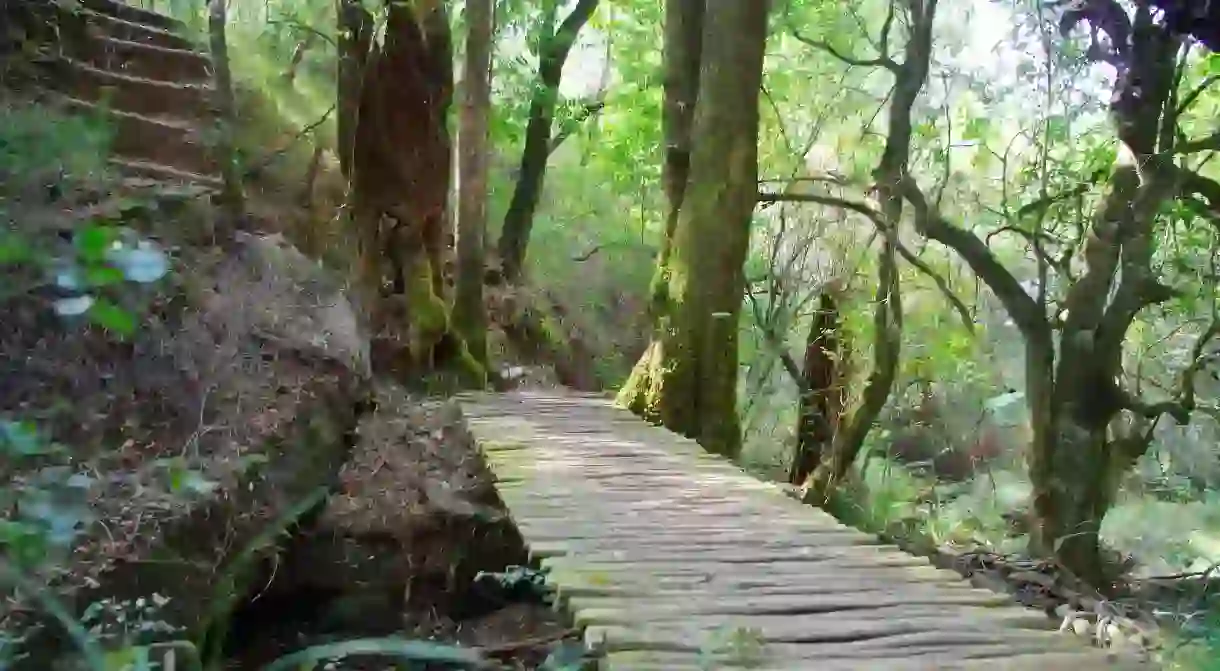A Hiker's Guide to Ghana

From climbing one of West Africa’s highest mountains and abseiling down sheer rock faces, to exploring the savannah and encountering some magnificent bird life and ancient caves, hiking in Ghana is nothing if not a surprise and a treat for those wanting to explore the path less trodden.
Why Hike Ghana
Hiking in Ghana can sometimes be a case of stepping into the unknown. A pastime that has only recently begun to take off, people have begun to venture out onto mountains, hills, savannahs, plains, rivers, forests and rainforests; places without many structured paths, virtually no signs and with all the abundance of wild, unspoiled nature.
There’s variety, too. Mount Afadjato, one of the highest mountains in West Africa, offers a four- to six-hour hike, and following on from this, the area around the Volta has many minor mountains with spectacular views and fresh air, and with very little in the way of interference by the modern world, making it a hiking highlight. The hills and plains around Krobo are fast becoming a popular destination for hikers, and the length and breadth of Lake Volta (the largest artificial lake on earth) and its tributaries afford wonderful opportunities for a multitude of river hikes through lush foliage.

When to Go
The climate is on the whole damp and humid, and hiking may not appeal to those that are adverse to some sweat, especially in between February and April, the hottest time of year. From the rainy season onwards, things are much more pleasant, and from June until the end of September there is usually more temperate weather, the sun is more cloud-covered and the end of the day and early morning can surprise with some cool breezes. Starting early in the morning is a must for any season, the equatorial days being more abbreviated than in other parts of the world. Regardless of the time of year, be prepared to sweat!

Where to Go
The lush green Volta region in the east offers drastically different landscapes than the rest of the country. Its high elevations and gorgeous valleys allow for some spectacular scenery and wildlife. Mount Afadjato is the highest peak in West Africa and its delights include a dense, thickly wooded forest intercut with streams that wind their way towards Wli Waterfalls, a breathtaking multi-levelled natural wonder that is a popular draw. A four- to six-hour hike up the mountain will allow you to see the upper two levels, as well as vistas that penetrate into neighbouring Togo, thick woodland, a plethora of bird and monkey life and a hike that will have you climbing, descending and clamouring in exhilaration.

Krobo
Krobo is easily accessible from Accra and is perhaps the best place for a day hike that consists of between three and six hours of walking. The hills around Krobo contain many old cave sites, rock boulders and unusual landscapes. On the plains there is an extensive savannah with deer, and beyond this, the lush areas of Kpong, Akuse and Asutsuare.

Western Region
Most hiking spots here pass through protected habitats and coastal communities and end up at the stilt villages at the extreme end of the country, bordering Ivory Coast. The Ankasa and Amansuri conservation areas are located here, as well as the international biosphere reserve park, Bia National Park and Akatekyi crocodile pond.

Akosombo
This flooded dam area teems with wildlife and forests that surround the snaking river, itself filled with freshwater species and dotted with islands.

Kakum
Hiking in and around this rainforest preserve (one of only two on the African continent) offers hiking through open grassland to forest trails, passing through remote villages along the way. As it’s a popular national park and a UNESCO World Heritage Site, there are good trails throughout.

What to Take
A good pair of hiking boots is a must. The terrain will be endlessly changing, regardless of where you are hiking, and this can tear up a conventional pair of trainers pretty fast. Many hiking paths aren’t well worn, with many thorny and rocky hazards, so a pair of sturdy soles will prove a useful barrier between you and the underbrush.
Don’t underestimate the amount of water you will need, and take extra with you. The hikes will take you well away from civilisation and there probably won’t be any opportunity to buy more along the way.
Do pack a spare T-shirt for after your hike, as you are bound to be pouring with sweat and you will greatly appreciate something fresh to wear.
You will need some snacks for energy; some nuts or fresh fruit will keep you energised as the heat or the sun saps your energy.
Finally, don’t forget to take a camera to capture the views and the great landscapes and nature you encounter along the way.

Organising Your Hike
Guides are a must when hiking Ghana, for the landscapes outside the cities aren’t well mapped and the paths aren’t well worn, so you must rely on local knowledge to navigate your way. Fortunately, there are many groups and options to be had for guiding and group tours that take you all over the country. Ghana Mountaineering and Ashanti African Tours provide extensive and well-organised hikes, including overnight excursions, and can also offer more complex options such as night hikes and river hikes with mountain climbing, camping and abseiling.













